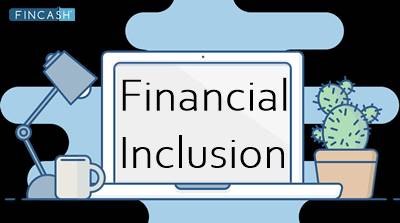What is Financial Inclusion?
Financial inclusion is a way of providing individuals with banking and financial services. It offers essential financial services, regardless of their income or savings, to include everyone in society. It is focused on giving economically disadvantaged people the best financial solutions.

The word is generally used to define the savings provisions and lending services for the poor in an inexpensive and easy-to-use way. It aims at making optimal use of the money for the poor and marginalized and assists them in achieving financial education.
With developments in financial technology and digital transactions, financial inclusion is now being facilitated by more and more start-ups. The Reserve Bank of India originally established the notion of financial inclusion in India in 2005.
Financial Inclusion Objectives
Financial inclusion objectives are as follows:
- A fundamental bank’s basic account to make and receive payments
- Product savings (including investment and pension)
- Easy credit and overdrafts connected with accounts without add-ons
- Transfer facilities or remits
- Micro- and non-micro-insurance (life and non-life)
- Micro pensions
History of Financial Inclusion in India
Under Pradhan Mantri Jan Dhan Yojana (PMJDY), over 192.1 million accounts were opened. These zero-balance bank accounts included 165.1 million debit cards, 30 000 INR Life Insurance cover, and an accidental 1 lakh INR insurance cover.
Other than PMJDY, there are several more schemes for financial inclusion in India, including:
- Pradhan Mantri Vaya Vandana Yojana
- Jeevan Suraksha Bandhan Yojana
- Stand Up India scheme
- Pradhan Mantri Mudra Yojana
- Pradhan Mantri Suraksha Bima Yojana (PMSBY)
- Sustainable Capital Fund (SCF)
- Varishtha Pensions Bima Yojana (VPBY)
- Atal Pension Yojana (APY)
Talk to our investment specialist
Financial Inclusion with FinTech Assistance
The use of sophisticated technology in the financial sector is referred to as Financial Technology. Financial inclusion is improving significantly over the world with the development of financial technology or fintech. India also has a large number of fintech firms, which constantly try to simplify financial services for potential customers. Fintech has also succeeded in supplying minimum-cost financial services and solutions. This is of great help to clients because their costs are low, and their savings can also be distributed for other needs.
Financial technology businesses can apply for loans or open bank accounts by using mobile phones in remote areas. Several people in rural Indian areas have mobile telephones, and some have mobile connections and can therefore make use of fintech services to obtain dependable banking services.
Some of the more advanced fintech solutions that people employ include:
- Digital payment systems
- Crowdfunding
- Electronic wallets
- Peer-to-peer (P2P)
These modern banking solutions are used by many people in both rural and urban settings. But many people who have not had any experience of a banking institution or any other financial organization remain untouched. Any mobile financial service is difficult for such people.
Many of these poor people are prone to be deceived by financial scammers if they engage in financial transactions through cheques or cash. Also, individuals may end up paying exorbitant fees at their branches to open a deposit or apply for a loan.
These costs can include transaction fees, money order fees, etc. To prevent the poor from such excessive financial services, Fintech companies work together to develop simpler and faster banking operations that minimize superfluous charges and penalties. The development of these systems helps to include people in the society
Digital Payment Systems for Financial Inclusion
You can also use electronic payment wallets to pay for goods and services in your residential areas. The Indian government has established many electronic wallet systems using smartphone applications, including Aadhaar Pay, Bharat Interface for Money (BHIM), and much more.
Electronic wallets refer to wallets that can be utilized using electronic methods, for example, mobile phones. These wallets substitute for actual wallets. Thus, a user can make online cashless payments anywhere and at any time. These e-wallets can be used for the payment of public bills, mobile charges, e-commerce portals, food stores, etc.
When customers use these products, many digital financial solutions provide appealing offerings and savings. Such offers are highly beneficial for those who are economically disadvantaged. You will be able to take advantage of cashback, deals, and rewards, and these incentives can save a great deal of money.
Conclusion
Financial inclusion reinforces the economic resources available and creates a saving idea among the poor. Financial inclusion represents a significant step towards inclusive growth. This improves the poor population's overall economic development. In India, the upliftment of people in poverty by providing them with adapted financial products and services requires successful financial inclusion.
All efforts have been made to ensure the information provided here is accurate. However, no guarantees are made regarding correctness of data. Please verify with scheme information document before making any investment.












